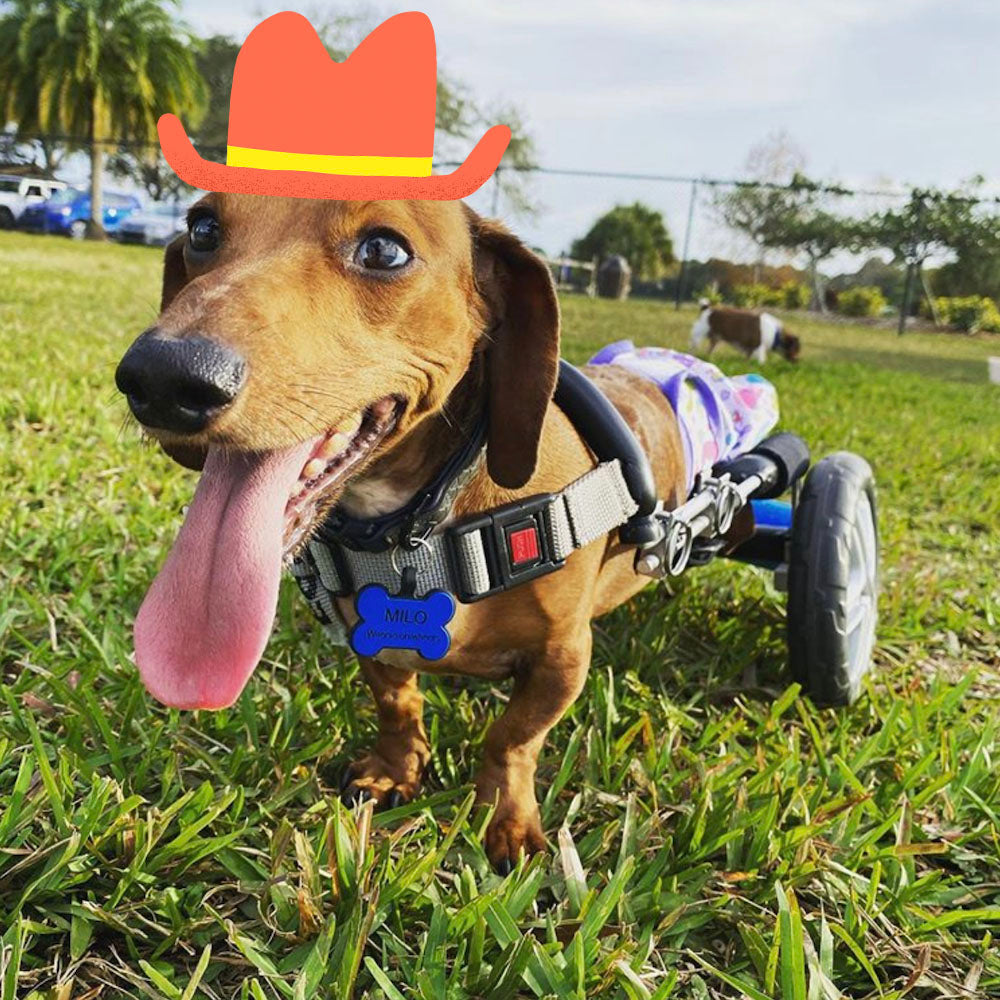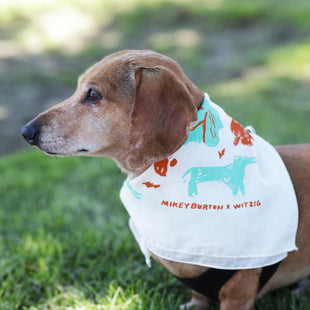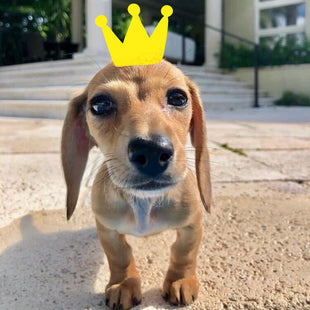
Intervertebral disc disease — or IVDD, as it’s commonly referred to — is all too familiar to dachshund parents, as the disease affects approximately 20–25% of dachshunds. But what exactly is IVDD, and what (if anything) can parents do to protect their doxies?
What is IVDD?
IVDD is a genetic disorder that causes calcification in spinal discs. A healthy spinal disc has a jelly-like center and provides cushioning for the spine when your pup is moving around, but when a dog gets IVDD, the moisture in the disc is lost. When this calcification occurs, the disc expands, putting pressure on the spinal cord, spinal nerve, or spinal nerve roots. Sometimes, IVDD can cause spinal discs to rupture, but in dachshunds, bulging of spinal discs is far more common. IVDD isn’t unique to dachshunds, though — corgis, shih-tzus, beagles, and poodles are among other vulnerable breeds, too.
What can I do to protect my dachshund from IVDD?
IVDD is painful and alters dachshunds’ day-to-day behavior and abilities, but it’s important to remember that it’s a disease — not an injury. This means that no dog is immune to IVDD. The best thing you can do for your pup is keep them in good shape, and avoid putting excess strain on their spine. A well-balanced diet and regular exercise lay a good foundation for your dachshund’s whole-body health, and limiting the amount of jumping up on furniture and climbing up and down big staircases can also help keep their spines happy.
Other good practices to get into in order to protect your pup’s spine? Ensure you’re supporting their back when picking up or carrying your dachshund. When they’re on a leash, a harness is usually a safer bet than a collar. There’s no magic bullet prevention technique, but you certainly won’t do any harm by raising as healthy of a dachshund as possible.
How do I know if my dachshund has IVDD?
Catching IVDD early is the best way to reduce the severity of its impact, so knowing what to look out for can save you and your dachshund some pain in the long run. In the majority of affected dachshunds, symptoms start to appear between the ages of 3 and 7. You may notice that your pup is a little more withdrawn or reluctant to play. Because they’re in pain, they may also show signs of aggression or yelp when they’re touched. Their backs may appear hunched or their gait may change as a result of the pressure on their spine, too. If you notice any of these symptoms in your dachshund, it’s worth a trip to the vet — and while you’re at it, add some cushioning to your travel crate to keep your dog as comfortable as possible while you’re en route.
What does treatment look like?
Depending on the severity of a dog’s IVDD, there are two main paths for treatment. The first, a more conservative treatment, relies heavily on crating your dachshund until the pain subsides. Keeping your pup in their crate (except for the necessary bathroom break or gentle snuggle) reduces movement in their spine, allowing any swelling to go down. It’s sort of like the dog equivalent of RICE (rest, ice, compress, and elevate) for human injury. Your vet may recommend medication to help with swelling or pain, too. In addition to crate rest and medication, some owners also rely on an alternative healing modality like acupuncture.
If your dachshund’s IVDD is more serious — your vet will often determine the severity by performing a neurological exam — or if the conservative treatment isn’t working, your vet may recommend surgery. In surgery, any disc material that is putting pressure on the spinal cord (and causing your dachshund a lot of pain) is cleared out. When you see your pup after surgery, their back will likely be shaved and you’ll be able to see the incision. They may also be drowsy from the pain medications used to keep your dachshund comfortable during surgery. Both the drowsiness and the visible incision are temporary, and your pup (with patience!) will heal. Once you bring your dachshund home from surgery, crate rest for about 4–6 weeks is crucial to allow the spine to heal. Many vets also recommend PT for your dachshund to help with rehabilitation.
While it’s no fun for you or your dachshund if they are diagnosed with IVDD, there’s an enormous community of vets and dachshund experts that can help you get the care you need for your pup. In other words, they’ve got your dachshund’s back, literally.
(Photo via @milotheweenie.)


